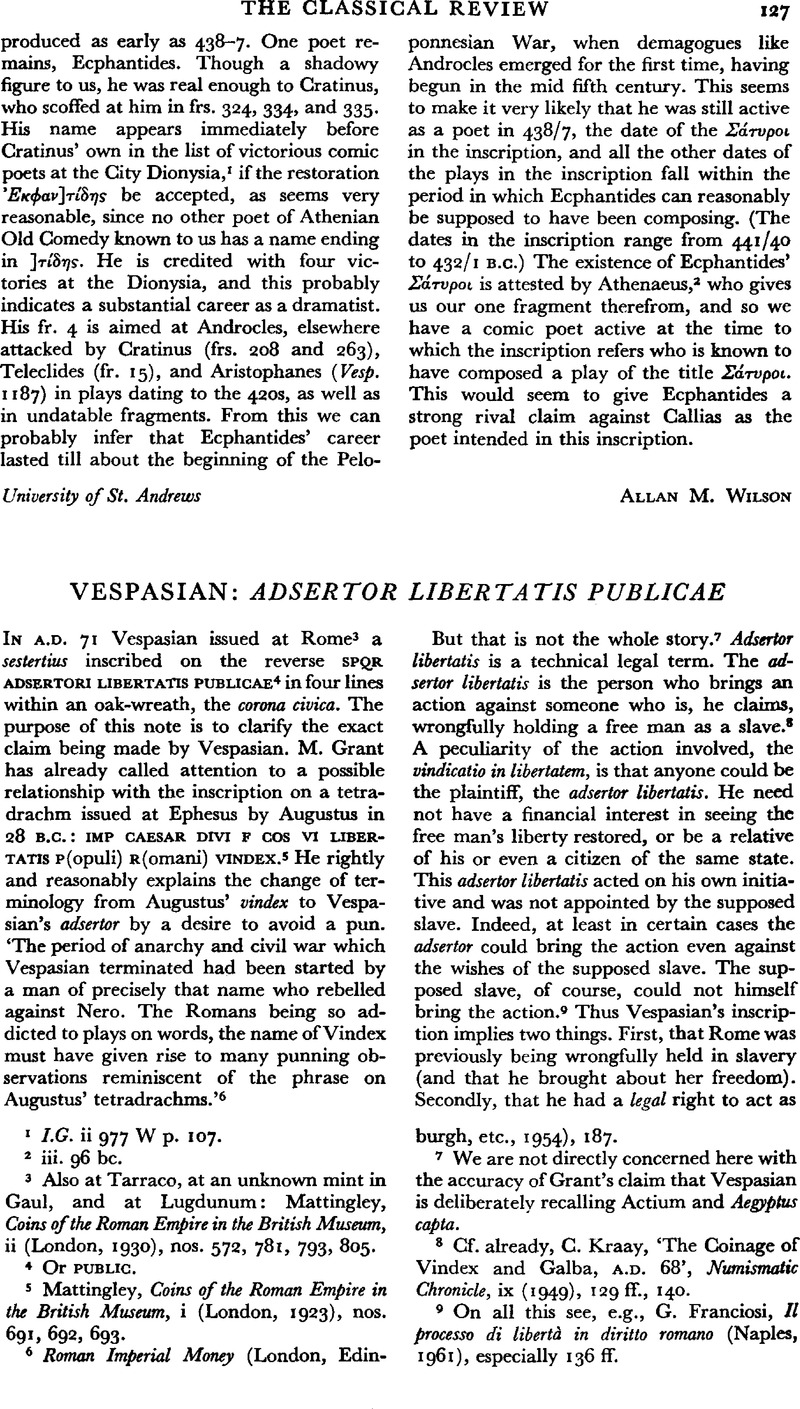Published online by Cambridge University Press: 27 February 2009

page 127 note 3 Also at Tarraco, at an unknown mint in Gaul, and at Lugdunum: Mattingley, , Coins of the Roman Empire in the British Museum, ii (London, 1930), nos. 572, 781, 793, 805.Google Scholar
page 127 note 4 Or Public.
page 127 note 5 Mattingley, , Coins of the Roman Empire in the British Museum, i (London, 1923), nos. 691, 692, 693.Google Scholar
page 127 note 6 Roman Imperial Money (London, Edinburgh, etc., 1954), 187.Google Scholar
page 127 note 7 We are not directly concerned here with the accuracy of Grant's claim that Vespasian is deliberately recalling Actium and Aegyptus capta.
page 127 note 8 Cf. already, Kraay, C., ‘The Coinage of Vindex and Galba, A.D. 68’, Numismatic Chronicle, ix (1949), 129 ff., 140.Google Scholar
page 127 note 9 On all this see, e.g., G. Franciosi, Il processo di libertà in diritto romano (Naples, 1961), especially 136 ff.
page 128 note 1 Suetonius, Vesp. I.
page 128 note 2 There was more than one kind of vindex—one intervened in the legis actio per manus iniectionem, another in the in ius vocatio—though we need not be more precise here. But cf. Kaser, M., Das römische Zivilprozess-recht (Munich, 1966), 49 ff., 99 ff., 165 f.Google Scholar
page 128 note 3 Kraay, relying on Donatus on Ter. Ad. 194, claims that vindex and adsertor ‘are equivalents in meaning’: op. cit. 139 ff. But in technical usage this is not so (cf. Franciosi, op. cit. 11) and Vespasian's adsertor libertatis is certainly technical. Indeed, even in non-technical usage the words may be equivalents but are not necessarily so.